This was published 6 years ago
Australian tourism to the US on the increase in 2017: Why Australia is bucking the 'Trump slump' trend
By Michael Gebicki
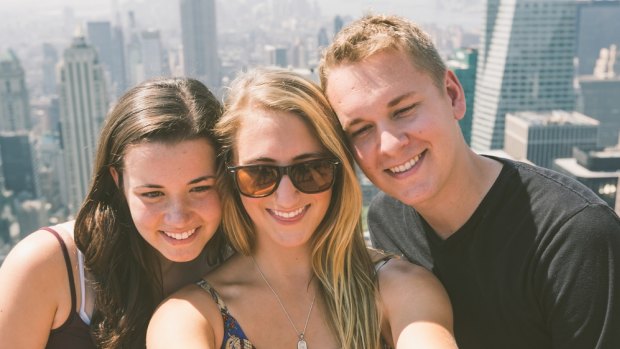
Trump hasn't stopped Australians insatiable appetite for the US.Credit: Shutterstock
It didn't take long for incoming US President Donald Trump's tough new entry policies to send a shiver of fear down the spine of the American tourism industry. Those fears have been borne out by recent figures from the US Department of Commerce.
In the first quarter of this year, foreign visitor numbers were down by 4.2 per cent. In May, the Global Business Travel Association predicted a $US1.3 billion drop in travel-related spending this year. That's spending by tourists from Europe and the Middle East alone, and includes hotel accommodation, food, airfares within the US, rental cars, entertainment and shopping. The association estimates a subsequent loss of 24,000 jobs.
A statement by the US Travel Association noted: "The latest Travel Trends Index offers a substantially more pessimistic assessment of the US travel economy than in months past, after a revised analysis reveals major storm clouds for the inbound international travel market."
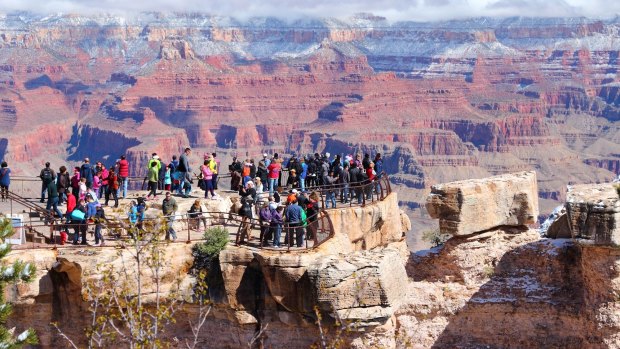
Tourists admire the Grand Canyon.Credit: Shutterstock
It's hard to avoid the conclusion that the US is on the nose, with tighter restrictions on travellers from selected Islamic countries, the laptop ban, and general disaffection with Trump's policies copping the blame. Unsurprisingly, some tourists are choosing to spend their holidays elsewhere.
So why are Australians behaving differently?
According to figures from the Australian Bureau of Statistics, 108,200 Australian residents returned from short-term visits to the US in July 2017. That's an increase of about 0.5 per cent on the same figure for the previous year. The comparable figures was also higher in May and June 2017. In fact, February and April were the only months in the first half of 2017 when fewer Australians return from visiting the US than in the same months in 2016.
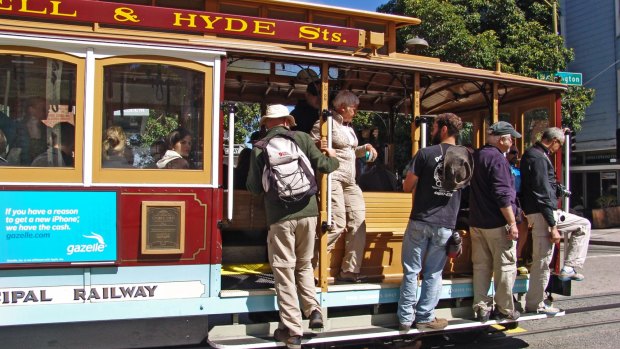
People and tourists travel on the side footboard of the famous cable car bus on a sunny September day in San Francisco.Credit: Shutterstock
For all of this decade, the US has been the third-most-popular destination for Australians travelling overseas, behind New Zealand and Indonesia, and it shows no signs of dropping down the charts.
According to a spokesman for Flight Centre, demand for flights to the US is steady. "The USA consistently ranks as one of the most popular destinations for Australian travellers. We put this down to the combination of affordable airfares and the dollar remaining at a relatively stable rate," says Tom Walley, head of leisure travel for Flight Centre Travel Group.
Darrell Wade, Intrepid Travel co-founder and executive chairman, echoes that analysis, and pins some of the reasons travellers are staying away.
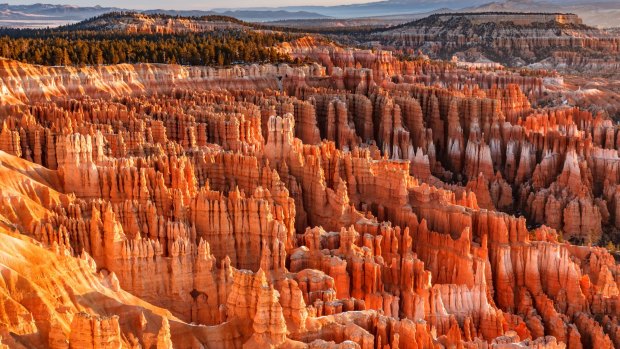
Bryce Canyon National Park, Utah.Credit: Alamy
"As a business we're not big fans of Trump – his attitude towards women is appalling, we stand against any policy that closes borders, and he doesn't exactly have the environmental credentials that align with Intrepid's values. When Trump pulled out of the Paris climate accord earlier this year, we decided to double our carbon-offset contribution for our US trips for the remainder of the year.
"Nonetheless, the USA is a fantastic country to travel through. Although we saw a dip in bookings to America immediately following the US election, travel to the country is up. In fact, 73 per cent more Australian travellers booked trips departing in May and June 2018, compared to the same time last year."
One reason offered for the enduring popularity of the US is the relative strength of our dollar against its currency. After starting out in January 2017 at a relatively low value of US72¢, the Aussie climbed quickly to US75¢ and it's been hovering at that level or higher since. (The current rate is US78¢ for $1.)
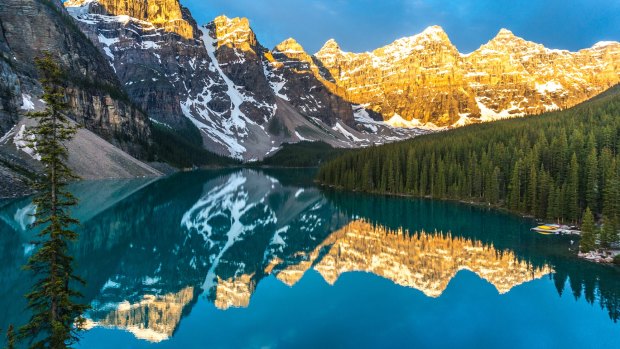
Tourism to Canada has massively increased: Moraine Lake in the Banff National Park.
See also: Five reasons the US is still cheap for Australian tourists
However, the euro has also appreciated against the US dollar over the course of this year, by more than our own currency. So too has the British pound, yet travel to the US from the EU has fallen off the wagon.
Placed against the bigger picture of Australians' overall travel patterns, the number travelling to the US takes on a different hue.
In July 2017, the total number of Australians travelling overseas rose by 0.5 per cent on July 2016, about the same as the increase in Australians returning in that month from the US.
See also: How to tip in the US
But in the first six months of 2017, 5.12 million Australians returned from overseas trips, an increase of 6.4 per cent on the first half of 2016. For the same period, the number of Australians departing on short-term visits to the US increased by just 0.6 per cent, indicative of a slackening appetite among Australians for travel there relative to the rest of the world.
So where would Australians be most likely to go if they wanted to visit North America but avoid the US? The only option is Canada, and here it's a very different story.
According to figures supplied by Destination Canada, inbound tourism from Australia to Canada grew by a whopping 21.8 per cent in the first six months of 2017 compared with the same period in the previous year.
Donna Campbell, who represents Destination Canada in Australia, is not blaming the "Trump slump" for the sudden upswing in Canada's popularity. As she points out, tourist numbers from Australia to Canada grew by 16.2 per cent in 2016 over the previous 12 months, and that has nothing to do with the negative appeal of Trump, nor the feel-good factor associated with Canadian Prime Minister Justin Trudeau.
Rather it's the increased frequency of Air Canada flights from Australia, and successful marketing combined with a push from tour operators. "All the wheels are turning together," says Campbell.
Maybe that's a lesson the US needs to take on board.
See also: Twenty things that will surprise first-time visitors to the US
Sign up for the Traveller Deals newsletter
Get exclusive travel deals delivered straight to your inbox. Sign up now.